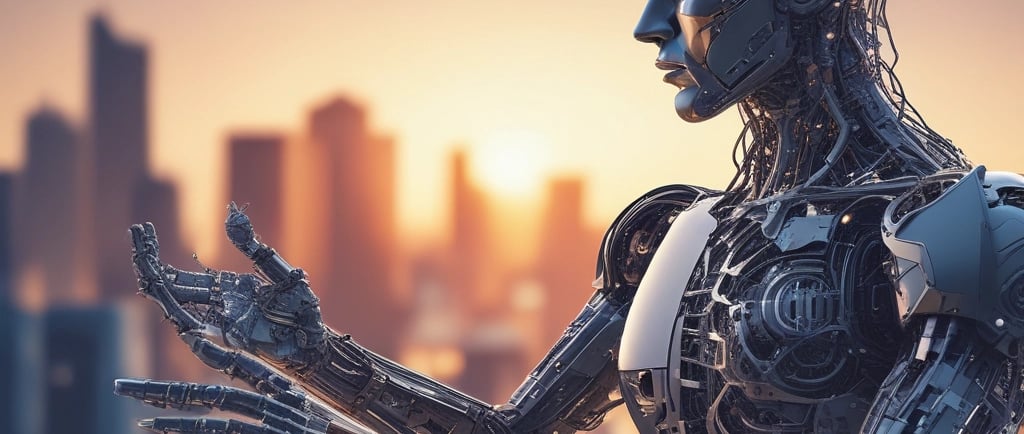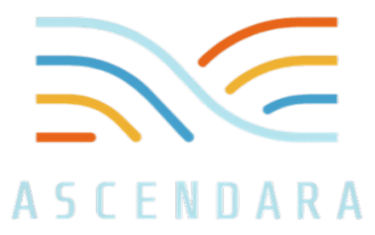Organizational Development (OD) Models in the Age of AI: The Dawn of Intelligent Transformation
💡 Imagine an organization that adapts in real-time, where leadership decisions are backed by predictive analytics, and employee engagement strategies are personalized by AI-driven insights. Welcome to the future of Organizational Development (OD) in the Age of AI—where traditional OD models are undergoing an intelligent transformation, shifting from static frameworks to dynamic, self-learning systems.
Anuj Kathuria
1/30/20253 min read


💡 Imagine an organization that adapts in real-time, where leadership decisions are backed by predictive analytics, and employee engagement strategies are personalized by AI-driven insights. Welcome to the future of Organizational Development (OD) in the Age of AI—where traditional OD models are undergoing an intelligent transformation, shifting from static frameworks to dynamic, self-learning systems.
🔍 How ready is your organization for AI-powered OD?
The very fabric of organizational structures, cultures, and change management is evolving. AI isn't just an enabler—it’s becoming an integral architect of organizational design, workforce agility, and leadership strategy. As businesses navigate digital disruption, the role of OD is no longer about incremental change—it’s about intelligent evolution.
So, what does this mean for the future of OD models? Let’s explore.
🔹 The Shift from Traditional OD to AI-Enhanced OD
📌 Then: Traditional OD Models
OD has traditionally been guided by models like:
✅ Lewin’s Change Management Model (Unfreeze, Change, Refreeze)
✅ Kotter’s 8-Step Change Model
✅ McKinsey’s 7-S Framework
✅ Burke-Litwin Model (Linking performance & change)
These models have helped organizations manage transformation systematically. However, they rely heavily on human analysis, slow feedback loops, and static strategies—making them less adaptable in today’s AI-driven, rapidly evolving business landscape.
🤖 Now: AI-Driven OD Models
AI is redefining OD in three key ways:
✔ Data-Driven Decision Making – AI collects real-time workforce data, providing deep insights into engagement, productivity, and skills.
✔ Predictive Analytics & Proactive Change Management – AI can anticipate cultural shifts, employee dissatisfaction, and leadership gaps before they become problems.
✔ Personalized Learning & Adaptive Systems – AI-powered OD models can customize leadership development and upskilling programs tailored to individual career paths.
🚀 Key shift: Organizations are moving from “one-size-fits-all” OD models to “real-time, AI-driven, adaptive OD systems” that continuously learn, evolve, and optimize workforce dynamics.
🔹 The Future of OD Models in the Age of AI
1️⃣ AI-Augmented Lewin’s Model: From Static to Continuous Transformation
Instead of the traditional Unfreeze → Change → Refreeze, AI enables continuous transformation through:
🔹 AI-driven cultural diagnostics to identify areas requiring change
🔹 Automated sentiment analysis to gauge real-time employee reactions
🔹 Real-time performance tracking for agile adaptation
💡 Example: AI-powered OD platforms can detect employee engagement dips, correlate them with organizational changes, and suggest leadership interventions before disengagement spreads.
2️⃣ Kotter’s Model Reinvented: AI-Enabled Change Acceleration
🔹 AI-Generated Change Readiness Score – AI assesses organizational readiness for change by analyzing historical trends and employee sentiment.
🔹 AI Chatbots for Transparent Communication – Keeps employees engaged through real-time Q&A on organizational changes.
🔹 AI-Powered Digital Nudges – Employees receive personalized nudges (via Slack, email, or mobile apps) to reinforce new behaviors aligned with transformation goals.
💡 Example: AI-based culture-fit models can assess how well an employee aligns with an organization’s transformation strategy and recommend targeted coaching interventions.
3️⃣ OD Models & Workforce Agility: AI-Driven McKinsey’s 7-S Model
Traditional McKinsey’s 7-S Model focuses on strategy, structure, systems, shared values, skills, style, and staff. AI transforms this by:
✔ AI-Driven Workforce Analytics – Identifies talent gaps and future skill needs.
✔ Dynamic Organizational Structures – AI suggests optimal team compositions based on skills, personality, and work styles.
✔ AI-Powered Leadership Dashboards – Predicts high-potential leaders, preventing leadership pipeline failures.
💡 Example: AI-based OD platforms can analyze workforce data to predict which employees will thrive in leadership roles and recommend tailored leadership development programs.
4️⃣ AI & Behavioral Economics: Predicting & Managing Organizational Change
Traditionally, OD models react to change. In the AI era, OD becomes proactive by:
🔹 Sentiment & Pulse Analytics – AI monitors employee emotions in real-time, allowing OD professionals to intervene before disengagement spreads.
🔹 Digital Twin Simulations – AI creates virtual models of organizations to simulate how changes in leadership, policies, or work culture would impact productivity.
🔹 Personalized Employee Journeys – AI tracks career aspirations, skills, and engagement levels, recommending personalized growth paths.
💡 Example: AI can predict workforce burnout and suggest strategic interventions before attrition spikes.
🔹 The Role of HR & OD Professionals in AI-Driven Organizations
With AI taking over analytics, modeling, and strategy optimization, what happens to the role of OD professionals? The answer: It evolves into a more strategic, human-centered, and ethical function.
New Responsibilities of HR & OD Leaders in AI-Enabled Organizations
✅ AI Governance & Ethics: Ensuring AI-driven decisions remain fair, unbiased, and aligned with company values.
✅ Human-AI Collaboration: Designing work environments where AI augments, rather than replaces, human creativity and innovation.
✅ Change Leadership in AI-Powered Workplaces: Navigating employee trust, resistance, and adoption of AI-driven OD initiatives.
✅ AI-Supported Employee Experience (EX): AI can personalize learning, career paths, and wellness programs, but OD leaders must ensure empathy and human touch remain central.
🔹 Fact: According to Gartner, by 2027, 70% of businesses will have AI-driven OD models in place. The future of HR and OD isn't about resisting AI—it’s about mastering its potential.
🔹 Final Thoughts: Are You Ready for AI-Powered OD?
The Age of AI is forcing organizations to reimagine OD models—from static frameworks to intelligent, predictive, and real-time transformation engines.
The question isn't whether AI will redefine OD. The question is: How ready are you to lead this transformation?
👉 How is AI transforming OD in your organization? What challenges and opportunities do you see? Let’s discuss in the comments!
#OrganizationalDevelopment #AIinHR #FutureOfWork #AITransformation #HRAnalytics #WorkforceAgility #LeadershipInAI #ChangeManagement #HRInnovation #Ascendara #AIHR #DigitalOD #HRStrategy #PeopleAnalytics
